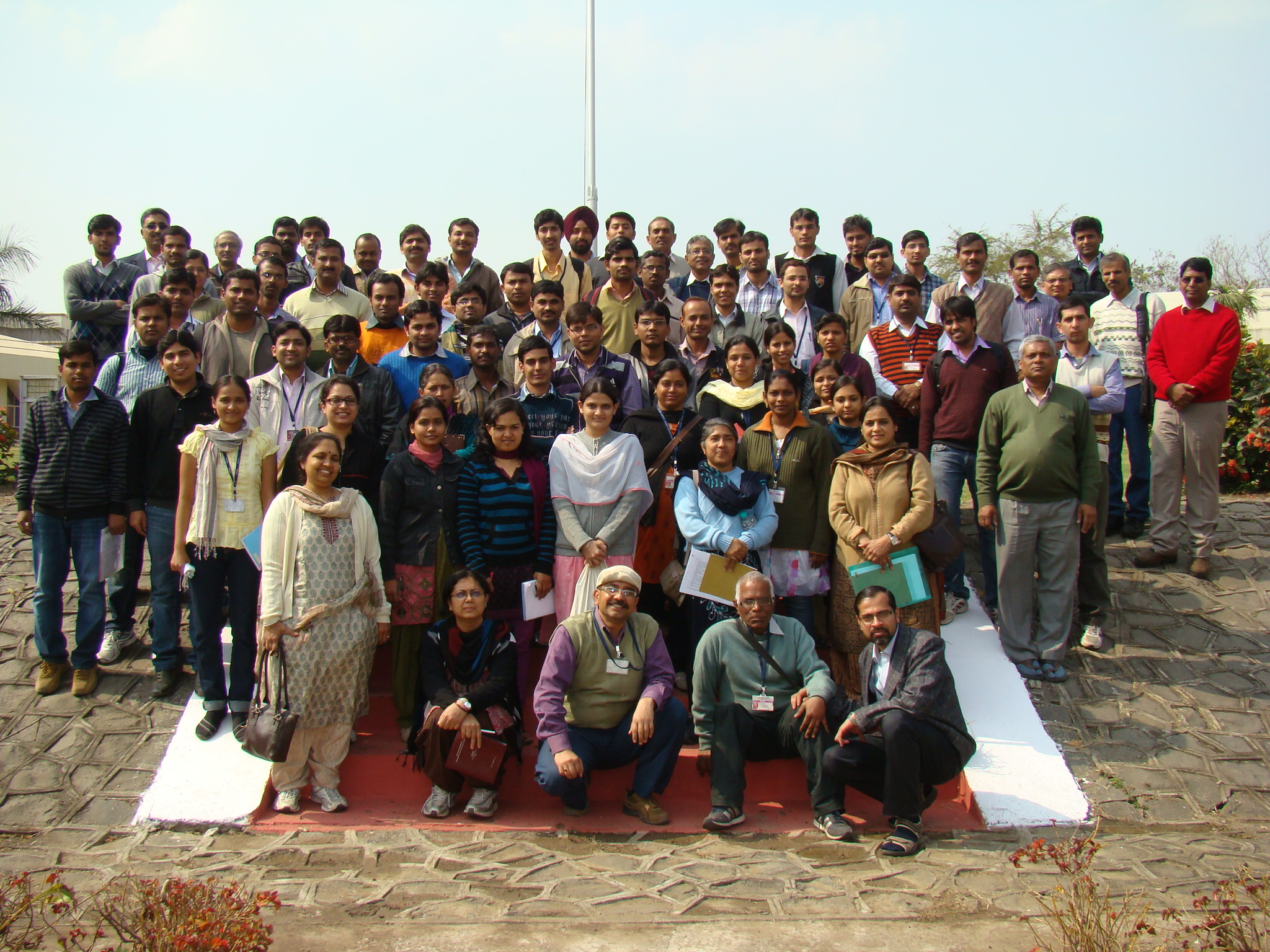|
First interaction meeting on synchrotron based X-ray diffraction was held on 24th and 25th of January 2012
RRCAT is home to two synchrotron rings Indus-1 and Indus-2. The beamlines operational in Indus-2 are :
- X-Ray lithography beamline ( BL-07) (RRCAT)
- Dispersive EXAFS beamline (BL-08) (BARC)
- Energy Dispersive X-ray diffraction (BL-11) (BARC)
- Angle Dispersive X-ray diffraction (BL-12) RRCAT)
- X-Ray photoelectron spectroscopy beamline ( BL-14) (RRCAT)
- X-Ray fluorescence microprobe beamline ( BL-16) (RRCAT)
The beamlines operational in Indus-1 are :
- Angle integrated photoelectron spectroscopy beamline (UGC-DAE-CSR)
- Angle resolved photoelectron spectroscopy beamline (BARC)
- Soft X-ray reflectivity beamline (RRCAT)
- Photo-physics beamline (BARC)
- High resolution infrared beamline (BARC)
In order to enhance the utilization of these facilities and increase the national user base, it is planned to hold regular interaction meetings with leading scientists and researchers from different parts of the country. Each such interaction meeting is proposed to be focused on a specific experimental technique with maximum emphasis on the facilities present at/to be added to the above beamlines
The first such interaction meeting on synchrotron based X-ray diffraction was held on 24th and 25th of January 2012. The theme of this meeting was ‘Structure determination using X-ray diffraction at ambient and high pressures’. The programme included lectures by the following persons:
- Prof. T.N.Guru Row, IISc, Bangalore(Lecture)
- Prof. Chandrabhas Narayana, JNCASR, Bangalore(Lecture)
- Dr. S.N.Achary, BARC, Mumbai(Lecture)
- Dr. N.P.Lalla, UGC DAE CSR, Indore(Lecture)
- Dr. Nandini Garg, BARC, Mumbai(Lecture)
- Dr. Anthony Arul Raj, IGCAR, Kalpakkam(Lecture)
- Dr. Amitabh Das, BARC, Mumbai(Lecture)
These lectures cover the range of experiments that are presently being performed at the ADXRD and the EDXRD beamlines. In the ADXRD beamline, the following experiments can be performed presently: powder diffraction in the Laue geometry and high pressure measurements on the Image plate, θ-2θ diffraction curves of thin films and polycrystalline materials, rocking curves for epitaxial films and single crystals on the diffractometer. In the near future, a low temperature setup (3K – 450K) will also be installed on the diffractometer. In the EDXRD beamline, measurements can be carried out at ambient and high pressures, and in the grazing incidence normal and in-plane geometry for getting depth resolved information.
It is realized that most of the analysis of the XRD data involves on a lot of experience of using the standard data refinement techniques and software. In view of this, there was a special interactive hands on session, where the participants were given exposure for the use of a software for XRD data refinement.
|














